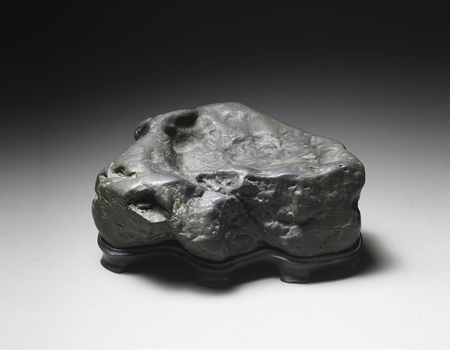Product Description
7692 A Suiseki (viewing stone), with wood stand
Japan 20th century Taisho period
Dimensions:
Suiseki: H. 10cm x W. 23cm x D. 19cm (4” x 9¼” x 7½”)
Suiseki with stand: H. 11cm x W. 23cm x D. 19cm (4½” x 9¼” x 7½”)
Suiseki, literally, “water and stones”, are small, naturally shaped stones traditionally admired for their beauty and are closely associated with nature and natural landscapes. They are similar to Chinese scholar’s rocks which were brought to Japan as Imperial gifts and influenced the development of suiseki in Japan. Suiseki have been appreciated and meditated by Japanese people in general but in particular by scholars, nobles and tea masters. They are expressive with special shapes, colour or texture, and suggest scenes from nature such as mountains, waterfalls, lakes, rivers, thatched huts, hills and cliffs. They can also resemble animals or human shapes or simply bear rare and beautiful features. Suiseki with hollows such as the current example are categorised as Tamari-ishi (stones that can bear water as a lake).
This type of stone come from the Shiriuchi River of Matsumae in Hokkaido and are known as Sengen-ishi or Matsumae-kotan. They have been popular with the lords of Matsumae domain since the Edo period as keiseki (stones for decorating Japanese rock gardens) or suiseki.





